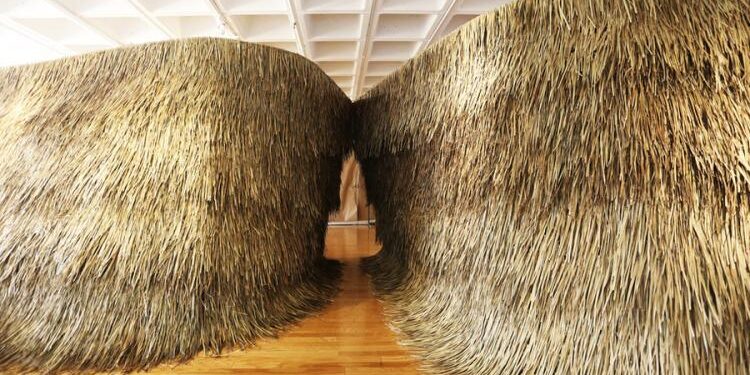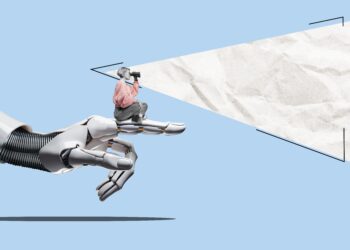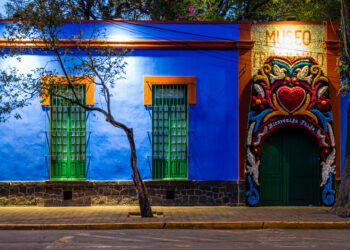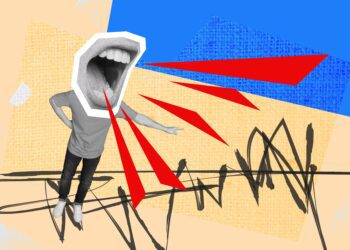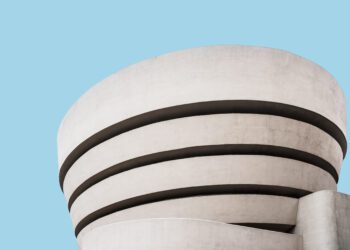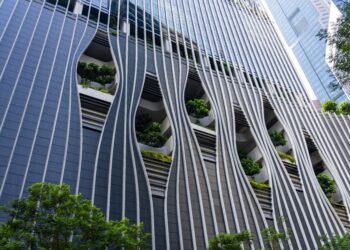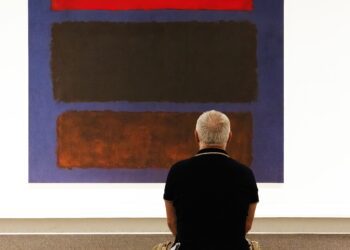In the remote desert of Nevada, an MIT team designs shelter for all species.
In a rural valley of northwestern Nevada, home to stretches of wetlands, sagebrush-grassland, and dozens of natural springs, is a 3,800-acre parcel of off-grid land known as Fly Ranch. Owned by Burning Man, the community that yearly transforms the neighboring playa into a colorful free-wheeling temporary city, Fly Ranch is part of a long-term project to extend the festival’s experimental ethos beyond the one-week event. In 2018, the group, in conjunction with The Land Art Generator Initiative, invited proposals for sustainable systems for energy, water, food, shelter, and regenerative waste management on the site.
For recent MIT alumni Zhicheng Xu MArch ’22 and Mengqi Moon He SMArchS ’20, Fly Ranch presented a new challenge. Xu and He, who have backgrounds in landscape design, urbanism, and architecture, had been in the process of researching the use of timber as a building material, and thought the competition would be a good opportunity to experiment and showcase some of their initial research. “But because of our MIT education, we approached the problem with a very critical lens,” says Xu, “We were asking ourselves: Who are we designing for? What do we mean by shelter? Sheltering whom?”
Architecture for other-than-human worlds
Their winning proposal, “Lodgers,” selected among 185 entries and currently on view at the Weisner Student Art Gallery, asks how to design a structure that will accommodate not only the land’s human inhabitants, but also the over 100 plant and animal species that call the desert home. In other words, what would an architecture look like that centered not only human needs, but also those of the broader ecosystem?
Developing the project during the pandemic lockdowns, Xu and He pored over a long list of hundreds of local plants and animals — from red-tailed hawks to desert rats to bullfrogs — and designed the project with these species in mind. Combining new computational tools with the traditional Western Shoshone and Northern Paiute designs found in brush shelters and woven baskets, the thatched organic structures called “lodgers” feature bee towers, nesting platforms for birds, sugar-glazed logs for breeding beetle larvae, and composting toilets and environmental education classrooms for humans.
But it wasn’t until they visited Fly Ranch, in the spring of 2021, that Xu and He’s understanding of the project deepened. For several nights, they camped onsite with other competition finalists, alongside park rangers and longtime Burners, eating community meals together and learning first-hand the complexities of the desert. At one point during the trip, they were caught in a sandstorm while driving a trailer-load of supplies down a dirt road. The experience, they say, was an important lesson in humility, and how such extremes made the landscape what it was. “That’s why we later came to the term ‘coping with the friction’ because it’s always there,” He says, “There’s no solution.” Xu adds, “The different elements from the land — the water, the heat, the sound, the wind — are the elements we have to cope with in the project. Those little moments made us realize we need to reposition ourselves, stay humble, and try to understand the land.”
Leave no trace
While the deserts of the American West have long been vulnerable to human hubris — from large-scale military procedures to mining operations that have left deep scars on the landscape — Xu and He designed the “lodgers” to leave a light footprint. Instead of viewing buildings as permanent solutions, with the environment perceived as an obstacle to be overcome, Xu and He see their project as a “temporary inhabitant.”
To reduce carbon emissions, their goal was to adopt low-cost, low-tech, recycled materials that could be used without the need for special training or heavy equipment, so that the construction itself could be open to everyone in the community. In addition to scrap wood collected onsite, the project uses two-by-four lumber, among the most common and cheapest materials in American construction, and thatching for the facades created from the dry reeds and bulrush that grow abundantly in the region. If the structures are shut down, the use of renewable materials allows them to decompose naturally.
Fly Ranch at MIT
Now, the MIT community has the opportunity to experience part of the Nevada desert — and be part of the process of participatory design. “We are very fortunate to be funded by the Council of the Arts at MIT,” says Xu. “With that funding, we were able to expand the team, so the format of the exhibition was more democratic than just designing and building.” With the help of their classmates Calvin Zhong ’18 and Wuyahuang Li SMArchS ’21, Xu and He have brought their proposal to life. The ambitious immersive installation includes architectural models, field recordings, projections, and artifacts such as the skeletons of turtles and fish collected at Fly Ranch. Inside the structure is a large communal table, where Xu and He hope to host workshops and conversations to encourage more dialogue and collaboration. Having learned from the design build, Xu and He are now collecting feedback from MIT professors and colleagues to bring the project to the next level. In the fall, they will debut the “lodgers” at the Lisbon Architectural Triennale, and soon hope to build a prototype at Fly Ranch itself.
The structures, they hope, will inspire greater reflection on our entanglements with the other-than-human world, and the possibilities of an architecture designed to be impermanent. Humans, after all, are often only “occasional guests” in this landscape, and part of the greater cycles of emergence and decay. “To us, it’s a beautiful expression of how different species are entangled on the land. And us as humans is just another tiny piece in this entanglement,” says Xu.
Established as a gift from the MIT Class of 1983, the Wiesner Gallery honors the former president of MIT, Jerome Wiesner, for his support of the arts at the Institute. The gallery was fully renovated in fall 2016, thanks in part to the generosity of Harold ’44 and Arlene Schnitzer and the Council for the Arts at MIT, and now also serves as a central meeting space for MIT Student Arts Programming including the START Studio, Creative Arts Competition, Student Arts Advisory Board, and Arts Scholars. “Lodgers: Friction Between Neighbors” is on view in the Wiesner Student Art Gallery through April 29, and was funded in part by the Council for the Arts at MIT, a group of alumni and friends with a strong commitment to the arts and serving the MIT community.
By Anya Ventura
Available here

